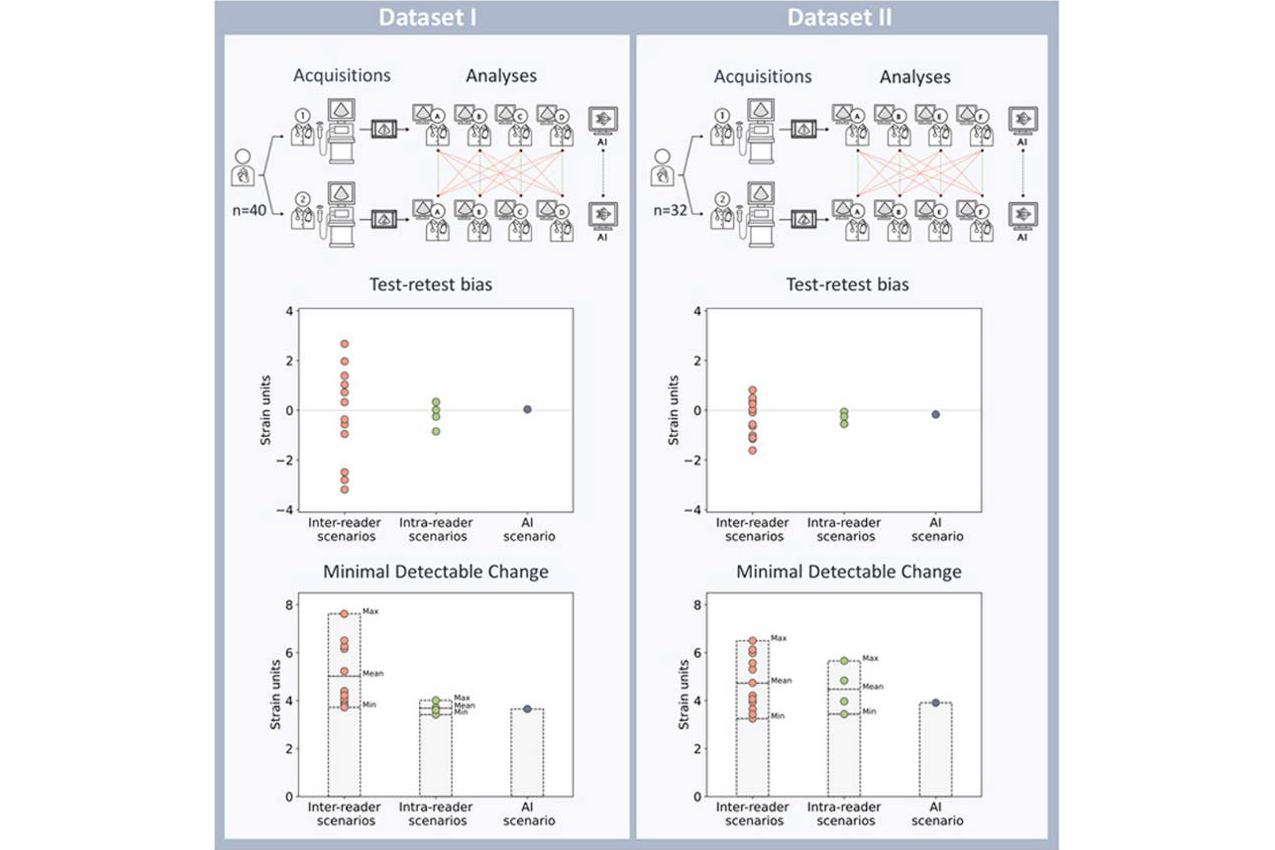Deep Learning for Improved Precision and Reproducibility of Left Ventricular Strain in Echocardiography: A Test-Retest Study
Salte IM, Østvik A, Olaisen SH, Karlsen S, Dahlslett T, Smistad E, Eriksen-Volnes TK, runvand H, Haugaa KH, Edvardsen T, Dalen H, Lovstakken L, Grenne B.
Assessment of left ventricular (LV) function by echocardiography is hampered by modest test-retest reproducibility. We developed a novel artificial intelligence (AI) method based on deep learning whch provides fully automated measurements of LV global longitudinal strain (GLS) and may improve the clinical utility of echocardiography by reducing user-related variability.
The aim of this study was to assess withinpatient test-retest reproducibility of LV GLS measured by the novel AI method in repeated echocardiograms recorded by different echocardiographers and to compare the results to manual measurements.
Two test-retest data sets (n = 40 and n = 32) were obtained at separate centers. Repeated recordings were acquired in immediate succession by 2 different echocardiographers at each center. For each data set, 4 readers measured GLS in both recordings using a semiautomatic method to construct testretest interreader and intrareader scenarios.
Agreement, mean absolute difference, and minimal detectable change (MDC) were compared to analyses by AI. In a subset of 10 patients, beat-to-beat variability in 3 cardiac cycles was assessed by 2 readers and AI. Test-retest variability was lower with AI compared with interreader scenarios (data set I: MDC = 3.7 vs 5.5, mean absolute difference = 1.4 vs 2.1, respectively; data set II: MDC = 3.9 vs 5.2, mean absolute difference = 1.6 vs 1.9, respectively; all P < .05). There was bias in GLS measurements in 13 of 24 test-retest interreader scenarios (largest bias, 3.2 strain units). In contrast, there was no bias in measurements by AI. Beat-to-beat MDCs were 1.5, 2.1, and 2.3 for AI and the 2 readers, respectively. Processing time for analyses of GLS by the AI method was 7.9 ± 2.8 seconds.
In conclusion, our fast AI method for automated measurements of LV GLS reduced test-retest variability and removed bias between readers in both test-retest data sets. Thus, by improving the precision and reproducibility, AI may increase the clinical utility of echocardiography.

Activity completed, link: https://doi.org/10.1016/j.echo.2023.02.017